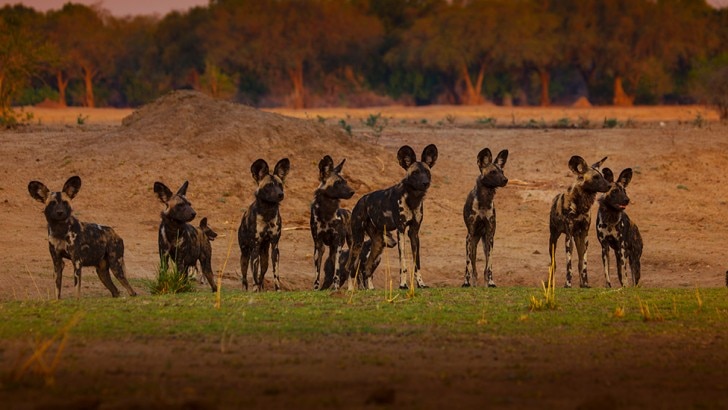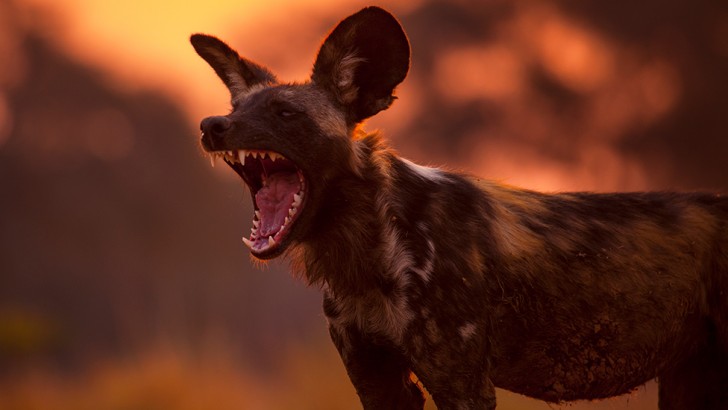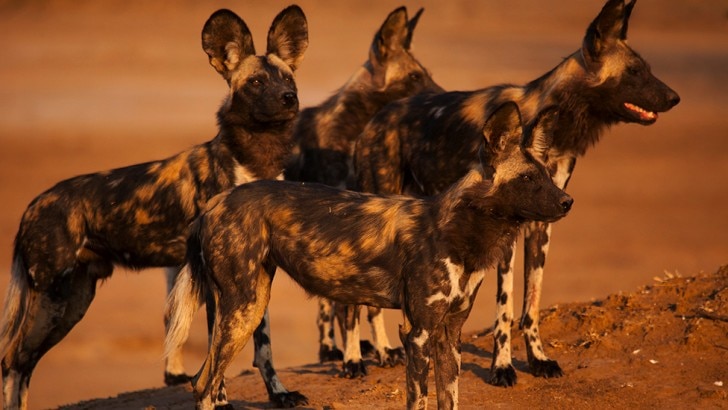

BBC Earth Podcast
Close your eyes and open your ears
Intimate stories and surprising truths about nature, science and the human experience in a podcast the size of the planet.
Animals
The BBC crew captured this breathtaking behaviour for the very first time
Think of singing animals and your mind will probably be drawn to bird-song, whale-song or the Lion King. So before hitting play, it is worth noting the difference between a call and a song. A call is an isolated cry made irregularly whereas songs are longer, comprising of different syllables and are performed regularly. The range of animals that can ‘sing’ is broader than you might imagine, as are their motivations for performing. So, let's start nature’s playlist, starting with a political track.

While filming painted wolves for Dynasties, the crew observed, and heard, a behaviour that had never been recorded before. The pack of painted wolves had been left without a leader, which is unusual. Normally, leaders are ousted and replaced by their challenger, but this particular pack’s matriarch, Tait, had died unexpectedly. Several months after Tait’s death, the wolves started to pair up into male/female couples and began to howl together in a duet. While not exactly the same noise, it was similar to the cry they use when one of the pack goes missing. However, none of the pack had disappeared.
“It was incredible,” said Nick Lyon, producer and director on Dynasties, on the fourth episode of the BBC Earth podcast. “It was a magical feeling and because none of us had heard it before, we were looking at each other going ‘what’s this?’ But then also then not wanting to talk because we were just enjoying the sound. They were in quite a hyper state during all of this. I think there was a mixture of excitement and stress. Certainly wasn’t a relaxed affair.”
The crew speculated that this was to test out new pairings and find a new dominant couple to lead the pack. Enough evidence wasn’t gathered to confirm the theory, but they believe that it will open up the topic for further research in the future.

Singing-contests in the natural world are not normally used to fill power vacuums, but to attract sexual partners. One unlikely musical species are mice. Male mice sing to find mates, but this is performed at an ultrasonic frequency, so humans can’t hear them. A 2015 study found that this mating cry isn’t the same every time and alters depending on the context. When responding to fresh female urine, the male mouse performs a more complex, multi-syllable and multi-sequence song whereas simpler songs are used in face-to-face seductions. The study suggests that the female mice prefer the more complex songs, which are more energetic performances. It is worth noting that the mice mating song varies depending on where in the world they live.
Singing can serve other functions in nature than for procreating. The croak of the Pacific Tree Frog might not initially appear to be the most melodious, but they have a variety of songs for different situations. The singing usually begins at sunset, peaking an hour later before fading away about three hours after that. While male Pacific Tree Frogs sing primarily to attract mates, they also have a second song which has a related, but different purpose.

Being too close to each other minimises the chance of successfully wooing, so the male frogs have to space themselves out at minimum distance of 20cm between them. However, if one of the frogs have a particular loud cry, this distance could be greater. The frogs will vary when they start singing in order to distinguish themselves amongst the chorus; harmonising would reduce their reproductive chances. Male frogs have to attract a mate in every sense of the word, not only does their call have to distinguish them as an appealing partner, but literally enable the female frogs to find them!
This behaviour is also observed in Male Sac-Winged Bats who use song to defend their territories. They emit a low-frequency song, but if they detect a similar low-frequency tune, they increase the rate and length at which they sing. Male Sac-Winged Bats whose sing at lower frequency for longer are rewarded with more children. They have a separate mating song, which are longer than their territorial defence songs and tended to be targeted at specific females.
Animals can indeed sing, with the songs each species of animal being comparable to musical genres. Distinct, wildly different and not to everyone's tastes. While animals can sing, don’t expect them to be gracing any televised singing contests anytime soon. Then again, there have been odder Eurovision entries.
Featured Image © Nick Lyon


Intimate stories and surprising truths about nature, science and the human experience in a podcast the size of the planet.